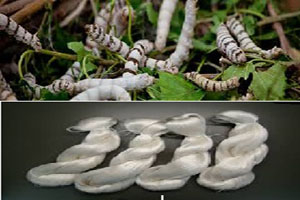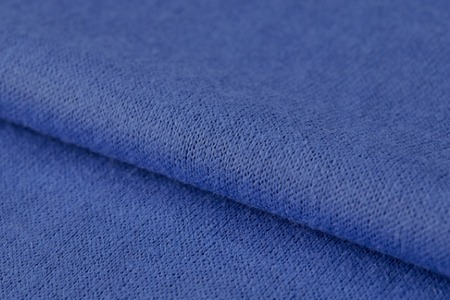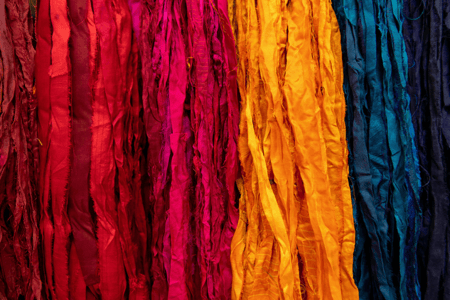
Cultivates silkworms for silk production, second largest agricultural industry in Uzbekistan
YarnsandFibers News Bureau 2014-07-24 23:15:00 – UzbekistanThe Uzbek Government holds a strong control over cultivating silkworms which is the second largest agricultural industry after cotton. Cultivation of silkworms is done for silk production and Uzbekistan is the third largest producer of silk after China and India.
In Uzbekistan, silkworms are cultivated according to ancient traditions at home. The entire family participates in feeding the continuously growing caterpillars. Cultivating silk cocoons has been practiced in Uzbekistan for centuries with the methods of production today resembling those used in the middle Ages. May is the time when silkworm cocoons are ready for processing.
The caretakers need to maintain a constant temperature that has to be 27-28 degrees and supply the silkworms with fresh mulberry leaves. By continuously eating, the caterpillars grow to about 70 times their original weight by the end of May. They consume 100-200 kilograms of fresh mulberry leaves per day. After about a month they start spinning cocoons around themselves.
The state strictly controls the silk producing process. Farmers and other rural residents reportedly receive 40-50 grams of larvae packed in small boxes from the Government in late April or early May. Silk production, as with cotton, is an odd mix of voluntary and forced labor in Uzbekistan. Rural families at times cultivate more than 25 thousand tons of cocoons a year.
Uzbekistan produces 85% of the silk produced within the CIS. Silk cocoons are a source of foreign currency for the state, with 70% of harvest being exported.
At harvest time, the collected cocoons are sorted and taken to special fabric making facilities and turned into silver threads for producing satin and adras, precious silk fabric.
Uzbek traditional clothing is made of satin while adras cloth is an integral part of a bride’s dowry.
Market Intelligence
Ask for free sample Report

experience
Customer Base
dedicated team
Countries Served Worldwide









